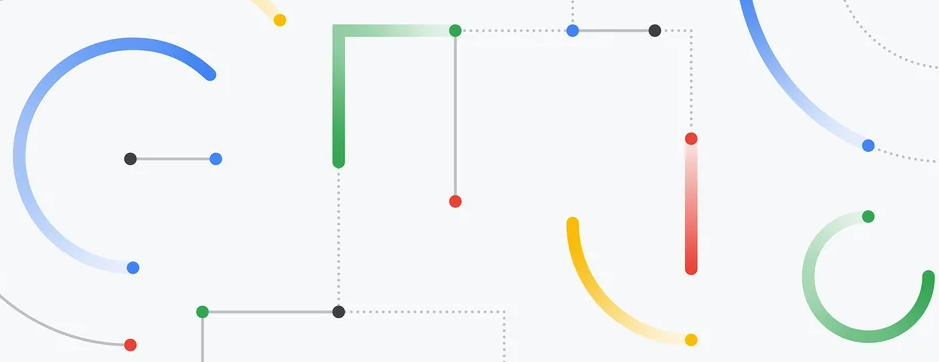The AI revolution has just taken another leap forward with the introduction of Bard AI, Google’s latest and greatest creation. This cutting-edge technology is set to shake up the AI landscape with its advanced capabilities, user-friendly interface, and ease of access. With its ability to process vast amounts of data, analyze complex patterns, and make predictions with unparalleled accuracy, Bard AI is poised to become the go-to choice for businesses, researchers, and individuals alike. In this article, we delve into the rise of Bard AI and explore what makes this new AI creation stand out from the crowd.
Artificial Intelligence continues to evolve and improve, and Google is at the forefront of this development with its latest creation: Bard AI. This cutting-edge technology is poised to make waves in the AI industry with its advanced capabilities, user-friendly interface, and accessibility. The article will examine the rise of Bard AI and explore what makes it unique in the field of AI and machine learning. From its ability to process large amounts of data to its exceptional accuracy in making predictions, Bard AI is set to become a major player in the AI world. Whether you’re a business looking to streamline your operations or an individual seeking to expand your knowledge, Bard AI is sure to deliver.
What is Bard AI?
The development of advanced technologies is a thrilling endeavor, as it allows for the transformation of deep research and innovative ideas into practical tools that positively impact people’s lives. This has been the journey with large language models, leading to the creation of the Language Model for Dialogue Applications (LaMDA).
LaMDA is now powering an experimental conversational AI service named Bard. This exciting project is making progress as it is now being opened up to trusted testers, before its wider release to the public soon.
Bard aims to merge the vast knowledge of the world with the strength, intelligence, and ingenuity of advanced language models. It utilizes information sourced from the internet to offer accurate and up-to-date answers. As a tool for creativity and exploration, Bard can assist in making complex ideas accessible, like explaining new findings from NASA’s James Webb Space Telescope to a child or uncovering information on top football strikers and accompanying drills to enhance skills.
What is LaMDA?
LaMDA stands for Language Model for Dialogue Applications. It is a large language model developed by Google that has been designed to enhance the capabilities of AI in language and conversation applications. LaMDA is trained on a large corpus of text from the internet, which allows it to generate human-like responses to a wide range of topics and questions. This technology can be used to develop AI-powered conversational services, such as chatbots and virtual assistants, among other applications.
More about LaMDA, Click here!
AI into our Daily Products
For many years, Google has been utilizing Artificial Intelligence (AI) to enhance its search engine capabilities for billions of users worldwide. One of its early AI models, BERT, made a major impact by improving the understanding of human language. Subsequently, the company introduced MUM, a more advanced and multilingual AI technology that can identify key moments in videos and provide critical information, including support during crises, in various languages.
Google continues to build on its AI legacy by developing new technologies, such as LaMDA, PaLM, Imagen, and MusicLM. These technologies are making it possible for people to engage with information in entirely new ways, from language and images to video and audio. The company’s goal is to integrate these latest AI advancements into its products, starting with the search engine.
One of the most fascinating aspects of AI is its ability to deepen our understanding of information and turn it into actionable knowledge. More and more, people are turning to Google for in-depth insights and understanding, beyond quick factual answers. For example, they might want to know which is easier to learn, piano or guitar, and how much practice each requires. AI can help in these scenarios by synthesizing information and presenting diverse perspectives, even for questions where there is no clear-cut answer.
Soon, AI-powered features will be rolled out on Google Search that distills complex information and multiple perspectives into easily understandable formats. This will make it possible for users to quickly grasp the big picture and learn more from the web, whether they are seeking out additional perspectives or delving deeper into related topics. With these new AI features, the search engine will become an even more powerful tool for learning and discovery.
Developers with AI
Google is making a big push to democratize access to cutting-edge artificial intelligence (AI) technology. In addition to developing innovative AI tools and services for its products, the tech giant is working to provide others with the tools they need to build their own AI systems.
The company is set to launch its Generative Language API next month, which will provide developers, creators, and businesses with access to its AI models, including LaMDA, with additional models to be added in the future. With this suite of tools and APIs, Google is aiming to make it easier for others to build innovative applications with AI.
In addition, Google is working to help startups that are looking to build reliable and trustworthy AI systems by scaling their efforts through partnerships with Cohere, C3.ai, and Anthropic, which was announced last week. Through these partnerships, Google Cloud is providing the necessary computing power to help startups build and scale their AI systems.
AI Pros and Cons
Artificial Intelligence (AI) has made remarkable advancements in recent years and has become a critical aspect of our daily lives. While AI holds tremendous potential to revolutionize various industries and improve our quality of life, it also brings about several potential drawbacks that are important to consider.
Pros of AI:
- Increased Efficiency: AI systems can perform complex tasks faster and more accurately than humans, thereby increasing productivity and efficiency.
- Cost-effective: AI systems can work 24/7 without breaks or fatigue, reducing the need for human labor and saving costs.
- Improved Decision-Making: AI algorithms can process vast amounts of data, identify patterns and make informed decisions in real time. This can help organizations make better business decisions, improve customer experiences and ultimately drive growth.
- Better Healthcare: AI can assist medical professionals in early diagnosis, predictive analysis, and treatment planning. This can improve patient outcomes and reduce the risk of human error.
- Enhanced Automation: AI has the potential to automate routine tasks, freeing up time and resources for more creative and strategic initiatives.
Cons of AI:
- Job Losses: Automation of tasks may result in job losses, particularly in industries where manual labor is prevalent.
- Bias and Discrimination: AI algorithms can perpetuate and amplify existing biases and discrimination in society, particularly when the data used to train the algorithms reflects these biases.
- Security Risks: AI systems are vulnerable to cyber-attacks and can be used for malicious purposes.
- Lack of Empathy: AI systems lack human emotions and empathy, which can lead to poor customer experiences and low levels of trust.
- Regulatory Challenges: The rapidly evolving nature of AI presents regulatory challenges, particularly around data privacy, bias, and ethical considerations.
AI Responsibility
Artificial Intelligence (AI) has seen a tremendous rise in recent years with advancements in technology, data, and computing power. The integration of AI into various industries such as healthcare, finance, retail and more has been rapidly growing and is seen as a way to automate tasks and improve processes. AI has the potential to increase efficiency, and accuracy and provide insights that were previously not possible.
One of the main drivers of the rise of AI is the vast amounts of data that are being generated and collected by organizations. The ability to process this data and extract valuable insights has led to the development of sophisticated AI algorithms and models. Another factor is the growth of cloud computing and the ability to access powerful computing resources, which has enabled organizations to build and train complex AI models.
However, the rise of AI has also raised concerns about privacy, security, and job displacement. As AI becomes more integrated into society, there is a need to ensure that the technology is developed and used responsibly and that it does not undermine privacy rights or result in unintended consequences.
In addition, there is a need for greater transparency and accountability in AI systems, so that organizations can demonstrate how their AI models work and how decisions are being made. This is particularly important in fields like healthcare, finance, and criminal justice where the consequences of errors can be severe.
Overall, the rise of AI has the potential to bring significant benefits to society, but it is important to address the challenges and ensure that the technology is used ethically and responsibly.
Thoughts
The rise of AI is transforming the way we interact with information and creating new opportunities for innovation. As AI continues to evolve and become more sophisticated, it is important to consider both its potential benefits and the ethical and social implications of this technology. As AI becomes more integrated into our daily lives, we must develop a responsible and equitable framework for its use, ensuring that it benefits all members of society. As we look to the future, the possibilities for AI are endless and we should be excited to see how it will continue to shape and improve our world.
As AI continues to revolutionize the way we live and work, it’s crucial that we responsibly harness its full potential for the betterment of society.




